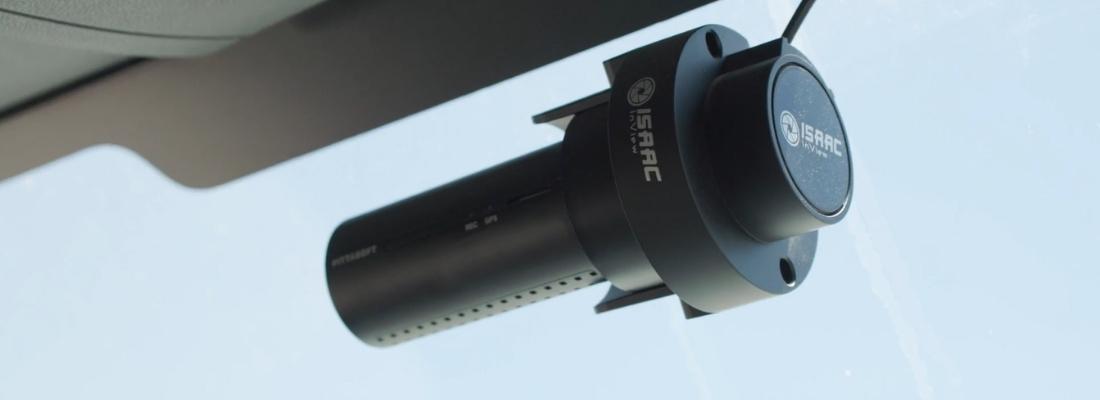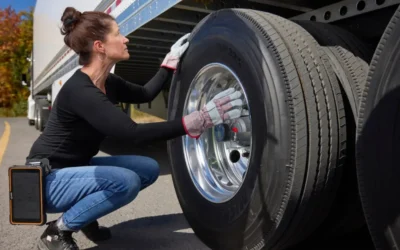Nuclear verdicts are a disaster for trucking companies. For many fleets, one bad crash threatens the entire business—even with extensive insurance coverage. Large jury awards can happen against fleets that comply with laws and regulations—even when their drivers aren’t responsible for a collision.
Fleets must take action to protect against a nuclear verdict by prioritizing a strong safety culture. Trucking companies should implement HR, training, onboarding, and compliance processes that support their safety culture. At the same time, dashcams and telemetry data can be used to reduce risk and immediately address unsafe driving behavior.
Understanding how nuclear verdicts have changed the industry should provide extra motivation for fleet managers to act.
Understanding the impact of nuclear verdicts on the trucking industry
Accidents always have a negative impact for big rig fleets. The growth of large jury rewards over the past 10 years raises the stakes for fleets, emphasizing their need to elevate their risk mitigation strategy and prevent a nuclear verdict.
Here’s a quick breakdown of the impact of nuclear verdicts on the trucking industry:
- Nuclear verdicts increase insurance rates across the industry
- Some fleets are unable to get coverage and face closure
- Verdicts exceed $10 million; in one case, more than $1 billion was awarded
- Nuclear verdicts disproportionately affect the trucking industry
- Lawyers use tactics such as “reptile theory” to win when drivers aren’t blamed for the crash
- The average size of verdicts jumped from $2.3 million to more than $22 million
Fleet owners and managers must have a risk management strategy in place to prevent nuclear verdicts from happening—beginning with a solid safety culture.
Watch now ➡️ Webinar: Risk Mitigation Using a Fleet Management Solution
Solid safety culture mitigates risk
Dashcams and truck telemetry data are crucial to defend against nuclear verdicts because they provide undeniable proof that exonerates drivers. A solid safety culture will reduce the chances of a collision happening in the first place. Prevention is more valuable than an insurance policy. Insurance costs are rising, and large verdicts can’t be covered by the average policy.
Invest in training programs and recruit safe drivers. Create HR policies that require drivers to have a minimum amount of relevant experience, a clean record, and all required licenses and certifications for the position. Onboarding processes should include extensive safety training for new hires. Ongoing training—and remedial training—further reinforces safe driving and industry compliance.
If you hire a driver not meeting all criteria, document why you hired them along with the training and mentoring provided to develop the driver’s skills. Lawyers can attack fleets for a lack of documentation, increasing the risk of a large jury award.
In fact, companies should document all hiring, onboarding, training, and disciplinary processes, including a formal written safety policy that outlines expectations. If a serious accident happens and a case goes to trial, having a clear record of safety-oriented HR processes can show that your fleet isn’t negligent and guilty of high-risk HR and insufficient training.
The National Highway Traffic Safety Administration (NHTSA) reported a 10.5% year-over-year increase of fatal traffic accidents in 2021. One of the main causes was risky driving behavior. A strong safety culture reduces unsafe behavior, and technology such as truck telemetry and dashcams can prove how your fleet—and each trucker—operates safely.
Reduce risk with cameras and truck telemetry data
If a bad accident happens, camera footage and truck telemetry data can exonerate a trucking company. Dashcam footage and telemetry provide undeniable proof, helping to fight false claims in court and enabling a judge to throw the case out before a formal trial begins. Dashcams and telemetry can also help to settle cases faster and reduce the cost of the claim when at fault.
A combination of dashcam video and telemetry reduces the risk of a nuclear verdict by combining visual information and hard data. Without truck telemetry, lawyers can argue that the dashcam doesn’t tell the whole story. Telemetry reinforces video testimony by showing data for velocity, brakes, steering, and other details that don’t show up on dashcam footage.
Video and truck telemetry data also support driver training and a strong safety culture. Fleets use telematics to automatically create alerts if an unsafe event occurs—such as hard braking, overspeeding, or sudden turns. Safety managers and trainers should go over the footage with drivers and provide coaching that reinforces safe behavior. Sometimes, the footage can also be used to train the fleet.
Compliance is key to avoid nuclear verdicts
Nuclear verdicts can be handed out even if the truck driver isn’t at fault. If a company is not compliant for HOS or other regulations, lawyers will argue that the truck shouldn’t have been on the road in the first place.
Some dashcam and telemetry vendors don’t provide electronic logging devices (ELDs), increasing the risk of HOS non-compliance. A turnkey solution that combines a certified ELD, telemetry, dashcam, and inward-facing camera helps drivers stay compliant while reducing the risk of nuclear verdicts.
In one nuclear verdict case, a pickup slid across a large grass median and into oncoming traffic, before colliding with a large fleet truck. A nuclear verdict was still awarded—despite the fleet driver traveling 20 MPH under the limit, braking on time, and operating in a safe and compliant way. Attorneys in this case used “reptile theory” to influence the jury’s decision.
Fleet and safety managers must collect evidence and work with insurers to build a powerful case that prevents a nuclear verdict. Documented HR, safety, onboarding, and training processes contribute to an indisputable case that lawyers can’t attack. Dashcam and truck telemetry evidence serve as undeniable evidence to exonerate the driver.
ISAAC knows that the consequences of an ELD outage can be extremely severe, especially in the event of a tragic collision. ELDs must be fully operational and used as mandated to avoid serious compliance issues.
Discover how our solution deters risk and improves safety.

About the author
Melanie Simard
Director Compliance, Client Service & Technical Support, ISAAC Instruments
Melanie Simard is Director of Compliance, Client Service & Technical Support at ISAAC. She brings these three groups together to ensure ISAAC clients receive best-in-class service and support, and to demystify all questions relating to regulatory compliance. She is passionate about this last subject, and well attuned to the kind of support ISAAC users need, as she was on that side of the equation before joining ISAAC. With over 20 years in the trucking industry, her field experience as a driver, dispatcher, compliance manager—not to mention an ISAAC user—the trucking DNA she brings to the table is a valuable asset to both ISAAC and its clients.









